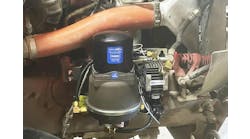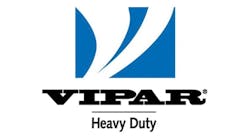Since I’m tired of writing about COVID-19, I’m going to assume readers are tired of reading about it. So let’s imagine that business is going to get back to something resembling what we’re used to, and that means my checking in with trucking regulators. But don’t groan, because this is good news: The industry still is taking the lead on safety (but needs to get permission).
Specifically, lighting supplier Grote Industries is asking to try pulsating brake lights on all trailers and van body trucks, a request that is similar to recent filings on behalf of tank truck carriers—one of which the Federal Motor Carrier Safety Administration already approved.
The filing, posted May 12, asks FMCSA to exempt Grote on behalf of commercial motor carriers from the 49 C.F.R. § 393.25(e) requirement.
Grote requests a five-year exemption because “use of pulsating brake-activated warning lamps, in addition to steady-burning red brake lamps as required ... would allow commercial carriers to not only maintain operational safety levels, but also implement more efficient and effective operations.”
Grote notes the request is similar to exemptions that already exist for other classes of commercial motor vehicle operators, including tanker trailers, school buses, tow trucks, and oversized loads.
Indeed, the Grote filing comes just over a year after tank carrier Groendyke Transport was granted permission to install an amber brake-activated pulsating lamp on its tank trailers in addition to the brake lamps required by the FMCSRs. Supporting its case, Groendyke in 2015 began testing the proposed new lighting on some of its fleet—without authorization from FMCSA.
But the test showed that those trailers were involved in 33.7% fewer rear-end collisions as compared to vehicles equipped with only the required brake lamps. In its approval of a five-year limited exemption, FMCSA called the test results “both persuasive and compelling given the magnitude of the rear-end crash population.”
“FMCSA believes that this real-world experience, along with the FMCSA and NHTSA research programs that demonstrated the ability of alternative rear signaling systems to reduce the frequency and severity of rear-end crashes, is sufficient to conclude that the implementation ... is likely to provide a level of safety that is equivalent to, or greater than, the level of safety achieved without the exemption,” the approval states.
The National Tank Truck Carriers has since followed the Groendyke approval with an April 2 request permitting any tank trailer to use red or amber brake-activated pulsating lamps. In the public comment period that formally closed May 4, trucking and safety organizations, along with numerous representatives of tanker fleets, expressed support for the NTTC request.
The American Trucking Associations suggested that FMCSA should work with the Technology & Maintenance Council (TMC) in developing a recommended practice (RP) that supports pulsating lamp spec’ing consistency.
ATA also reiterated comments submitted on the Groendyke exemption request that pointed to previous DOT reports and research, and noted that motor carriers recognize the potential of enhanced rear signaling (ERS) for improving safe operations. In addition to safety benefits, ERS performance is superior to steady burning brake lamps in severe weather conditions, taillight glare and around infrastructure obstacles, ATA added.
While voicing its support for NTTC’s request, the Transportation Safety Equipment Institute likewise provided FMCSA with a number of recommendations for tailoring the terms, or for possible FMCSR amendments to accommodate wider use of pulsating lamps. TSEI recommendations call for consistency in lamp placement, color, brightness and pulsing frequency, and for FMCSA to work with NTTC to monitor the safety improvement during the five-year exemption period.
Additionally, TSEI suggested FMCSA should modify the FMCSRs to allow such lamps for tank trailers at a minimum, but also consider straight trucks hauling hazardous cargo, and all other trucks and trailers. Of note to trailer builders, TSEI suggests FMCSA also should work with NHTSA to permit installation of such lamps on new trucks and trailers, which will reduce cost and increase usage.
The Commercial Vehicle Safety Alliance, while supporting the safety benefits of amber brake-activated pulsating lamps, is opposed to carriers being permitted to equip the tank trailers with red brake-activated pulsating lamps, out of concern over potential confusion regarding emergency vehicles.
Other than my worry that regulatory bureaucracy always can find a way to ruin a good, common-sense solution, flashing trailer lights should be a no-brainer. We’ll see.










